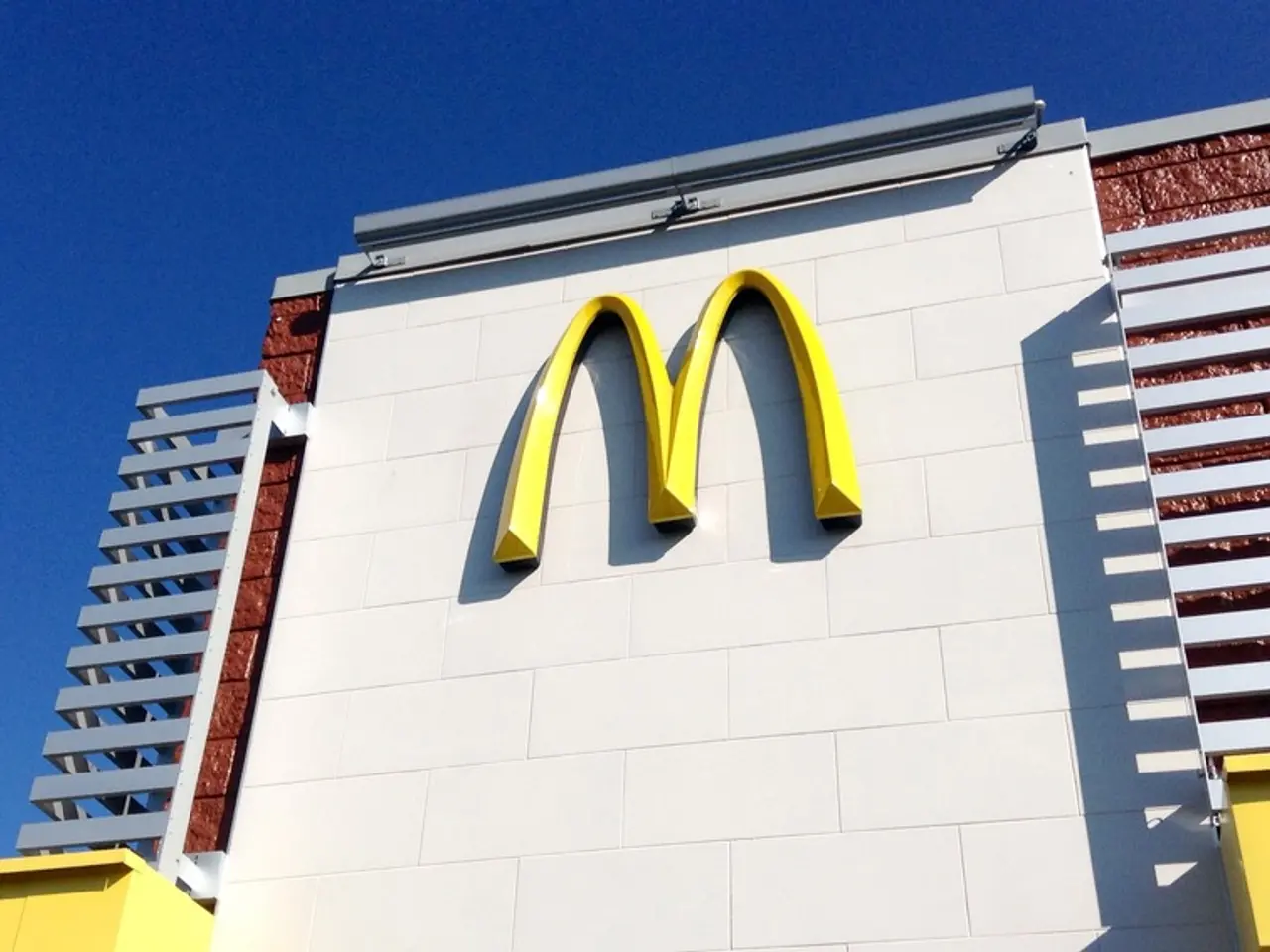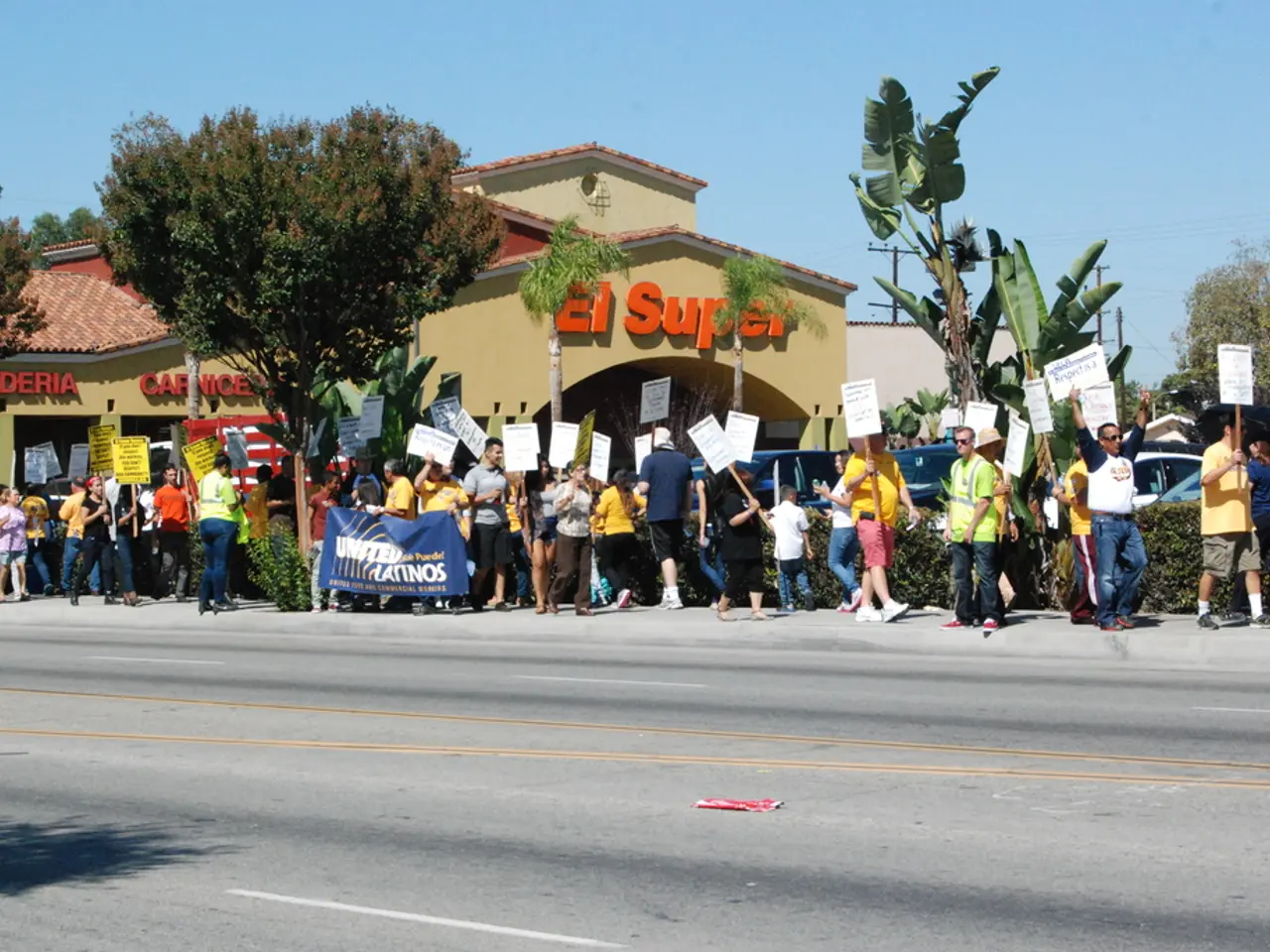Potential Cycle Low Points on the Horizon for J.B. Hunt Transport
On the prowl for potential investments and that means checking out stocks that are undervalued or trading near their 52-week lows. One such stock is J.B. Hunt Transport Services (JBHT), which hit rock bottom in April, following the announcement of Liberation Day tariffs. Prior to this, this stock was on an impressive multi-year uptrend. Let's take a closer look:
The Chart
The chart below shows that this stock was hovering around $200 per share in November 2024. It then plummeted significantly and hit the $120 range just after Liberation Day tariffs were announced. The stock has since rebounded slightly, trading above the 50-day moving average which is around $138, and well below the 200-day moving average which is nearly $161.
Interestingly, the longer-term chart below reveals how low it went in the aftermath of the "Great Financial Crisis" or "GFC", which was around $18 per share. However, since then, it has been on an impressive long-term uptrend, except for the past year or so. Despite being well off its all-time high of about $220 per share, it could still plummet further if the economy takes a turn for the worse. It did trade for about $75 per share during the Covid market correction. Also worth noting is that the 200-month simple moving average (represented by the brown trendline on the chart) is around $102 per share, and that could be where this stock bottoms out if there's an economic recession in the U.S.
Earnings Estimates and the Balance Sheet
The earnings estimates below, courtesy of Seeking Alpha, indicate a price to earnings ratio of nearly 26 times for 2025. That's a pretty rich valuation for a company that's not experiencing fast growth. Even if the freight business improves in the coming years, the PE ratio is still expected to be fairly high, considering the growth rate and cyclicality of this business.
5.64
| FY | EPS | YoY | PE | Sales | YoY || --- | --- | --- | --- | --- | --- || 2025 | 5.64 | 1.46% | 25.77 | $12.03B | -0.47% || 2026 | 7.01 | 24.27% | 20.73 | $12.65B | 5.17% || 2027 | 8.21 | 17.09% | 17.71 | $13.29B | 5.02% |
1.46%
In terms of the balance sheet, this company has about $1.92 billion in debt, with just over $43 million in cash. This debt load is a bit too high, especially given the cash holdings are insignificant compared to the debt. Debt becomes a bigger potential risk factor when there's an economic downturn.
25.77
Dividends and Share Buybacks
$12.03B
This company pays a quarterly dividend of $0.44 per share, totaling $1.76 per share annually. This provides a yield of about 1.21%, which isn't that exciting, considering all the potential risk factors. The company has been buying back shares, and it has about $650 million remaining on an existing share buyback authorization.
-0.47%
The Challenges Facing J.B. Hunt Transport
- There's already a "freight recession" and it could get worse if the entire U.S. economy slides into a full-blown recession. A freight recession occurs when there's too much available capacity and rates drop, and that's what this industry has been experiencing lately. Some sectors had extra demand during the pandemic which led to overcapacity, but now there's generally less demand for certain items as the economy slows down. This results in lower freight rates, affecting margins and revenues for many companies, including J.B. Hunt Transport.
- While freight volumes and rates have been falling, some expenses have been on the rise, such as wages, damaged and lost freight claims, and medical insurance. Interest rates have also remained elevated, leading to higher interest expenses for companies with big debt loads.
- Operational challenges include network imbalances, where significant amounts of equipment need to be repositioned due to increased or reduced demand in certain areas. There's also a shortage of drivers, pushing up wage expenses and recruiting costs. Studies show significant increases in wages have occurred in recent years, which is hurting profit margins.
- Macroeconomic concerns and uncertainties due to changing tariff policies are an ongoing issue. I do think the risks of a recession are higher than many currently believe, since the labor market is showing signs of softening. Tariffs could still be a major concern even though the stock market has rebounded. Some industries may have benefited from inventory stockpiling and consumers from stockpiling items in anticipation of tariff price increases later in the year. This could mean much lower demand in the latter half of the year. Management at J.B. Hunt Transport has stated that tariffs could impact both supply and demand.
7.01
Valuation Concerns - UPS Is a Better Bet
24.27%
Despite the stock's significant drop in the past year, it's still trading for nearly 27 times earnings, which seems too high in terms of valuation. There are faster-growing tech companies trading at similar or even lower valuations, and if you're interested in the freight industry, I'd suggest checking out UPS (UPS), which seems to be a much better value. UPS trades for just around 14 times earnings, and it yields nearly 7%.
20.73
Recession Potential
$12.65B
It's worth noting that this stock traded for about $18 per share in 2009. That gives you a sense of how high it has risen and how low it can sink during the bottom of the economic cycle. I believe the recession risks are relatively high, and the economic data could deteriorate further later in the year. This is due to weak data coming from various sources such as:
5.17%
- Lower retail sales than expected
- Weak industrial production
- Some signs of softening in the labor market
- A significant pullback in housing permits and starts
Based on this, I don't believe we've weathered the storm yet, despite the stock market setting new record levels.
8.21
Where I Could Be Wrong
17.09%
It's possible that this stock has hit bottom levels for this economic downturn in April. If the Federal Reserve lowers interest rates soon, and if clarity emerges regarding tariff policies, this stock could bounce back and a recession could be avoided. If the economy starts booming due to rate cuts, deregulation, and excitement over AI, this stock could return to its previous highs around the $200 level.
17.71
In Summary
$13.29B
I think this stock deserves a hold rating, at best. At worst, it could sink significantly lower in a recession, as it has historically. I feel the valuation is too rich when comparing it to other stocks in this sector, such as UPS. I think a recession and the trough of this downcycle could still be on the horizon. So, I wouldn't be a buyer of this stock unless it falls back to around $100 per share, which could be a strong support level based on the charts.
5.02%
No representations or guarantees are made. Hawkinvest is not a registered investment advisor and does not provide specific investment advice. The information provided here is for informational purposes only. Always consult a financial advisor.
- Considering the current economic uncertainties and the company's high debt load, investing in J.B. Hunt Transport Services (JBHT) might not be ideal from a financial perspective, especially given the potential risks of a recession.
- For those seeking diverse investment opportunities in the fields of finance, business, and investment, UPS (UPS) could be a better choice, offering a lower valuation and a higher dividend yield compared to J.B. Hunt Transport Services.







